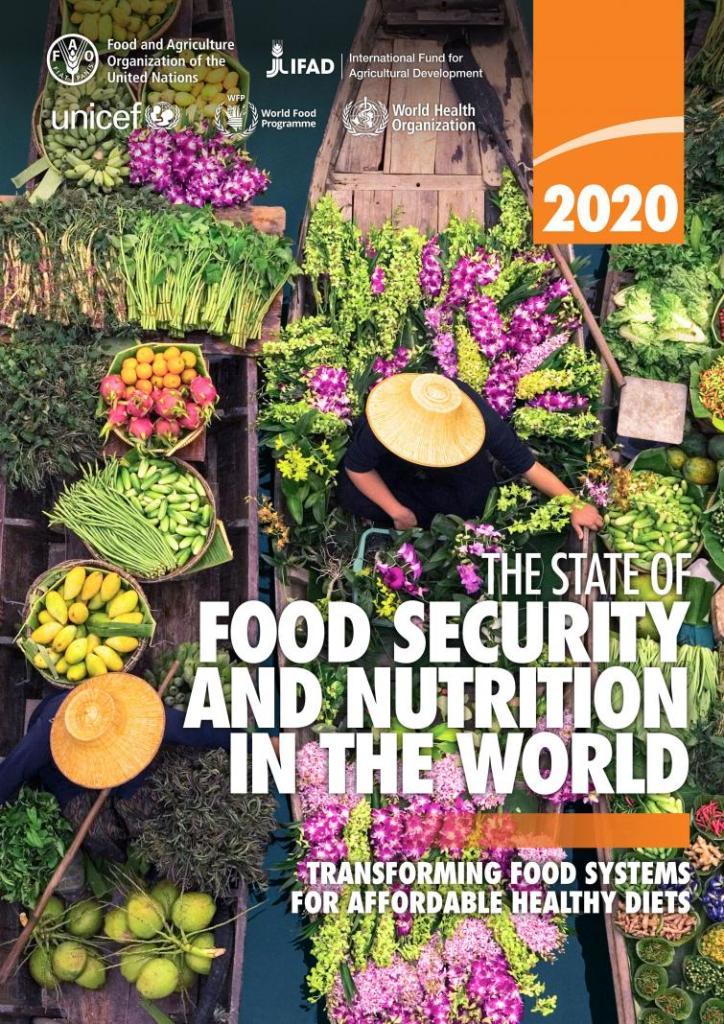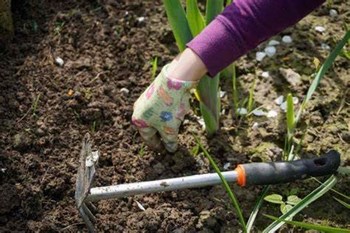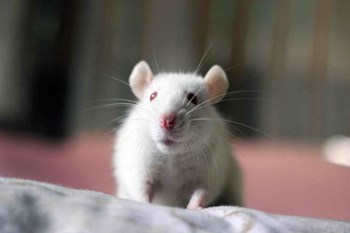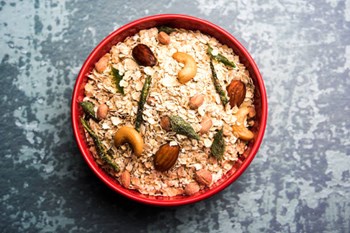
ലോകത്തെവിടെയും മനുഷ്യനെ ദാരിദ്യത്തില് കഴിയുന്നവര്, ദാരിദ്രൃ രേഖക്ക് മുകളില് കഴിയുന്നവര്, ഇടത്തരക്കാര്,സമ്പന്നര് എന്നിങ്ങനെ വേര്തിരിക്കാറുണ്ട്. ഇതുതന്നെ അന്തര് ദേശീയ -ദേശീയ തലത്തില് വ്യത്യസ്തങ്ങളാണ്.അന്തരാഷ്ട്ര നിലവാരത്തിലെ ദാരിദ്രൃരേഖ ദിനംപ്രതി ശരാശരി 1.9 ഡോളറില് താഴെ വരുമാനമുള്ളവര് (2020 ജൂലൈ 29 പ്രകാരം ഇത് 74.72X 1.9= 142 രൂപയാണ്) എന്നാകുമ്പോള് ഇന്ത്യയില് അത് നഗരവാസിക്ക് 33 രൂപയും ഗ്രാമവാസിക്ക് 27 രൂപയുമാണ്. ഇതൊക്കെ യാഥാര്ത്ഥ്യവുമായി അടുക്കാത്ത കണക്കുകളാണെങ്കിലും ഇവയെ അംഗീകരിച്ച് മുന്നോട്ടു പോയാലും ഇന്ത്യയിലെ കോടിക്കണക്കിന് ജനങ്ങള് പോഷകാഹാരം ലഭിക്കാതെ ജീവിച്ച് മരിക്കുന്നവരാണ് എന്നു കാണാന് കഴിയും. 2020 ജൂലൈ 13 ന് ഫുഡ് & അഗ്രികള്ച്ചറല് ഓര്ഗനൈസേഷന്(FAO) പുറത്തിറക്കിയ ഫുഡ് സെക്യൂരിറ്റി & നുട്രീഷന് ഇന് ദ വേള്ഡ് 2020 (SOFI 2020) ആണ് ഈ ദുരന്തപൂര്ണ്ണമായ കണക്കുകള് വെളിപ്പെടുത്തുന്നത്.
മനുഷ്യന് അടിസ്ഥാന ഊര്ജ്ജമായ കാര്ബോഹൈഡ്രേറ്റ് പ്രദാനം ചെയ്യുന്ന അരിയും ഗോതമ്പും ആവശ്യമായ അളവില് എത്തിക്കാന് നമ്മുടെ പൊതുവിതരണ സംവിധാനം ശ്രദ്ധിക്കുന്നുണ്ട്. ഫുഡ് കോര്പ്പറേഷന് ഓഫ് ഇന്ത്യയും സംസ്ഥാനങ്ങളും കേന്ദ്ര ഭരണ പ്രദേശങ്ങളും അവിടത്തെ റേഷന് ശ്രംഖലയും ചേര്ന്ന ചെയിനിലൂടെയാണ് ഈ വിതരണം നടക്കുന്നത്. അതുകൊണ്ടുതന്നെ പട്ടിണി മരണം പരമാവധി കുറയ്ക്കാന് കഴിഞ്ഞിട്ടുണ്ട്. 30 വയസ് പ്രായമുളള ആരോഗ്യവതിയായ ഒരു സ്ത്രീക്ക് ദിനവും ആവശ്യമായ 2329 കിലോകലോറിയാണ് ഇതിന് അടിസ്ഥാനമാക്കിയിട്ടുള്ളത്. 1.9 ഡോളറില് താഴെ വരുമാനമുള്ളവര്ക്കും ഇത് താങ്ങാന് കഴിയും. എന്നാല് അത്യാവശ്യ പോഷകത്തിന് ഉതകുന്ന 23 ചെറുതും വലുതുമായ പോഷക വസ്തുക്കള് അടങ്ങിയ അടിസ്ഥാന പോഷക ഭക്ഷണം ലഭിക്കണമെങ്കില് ഒരു വ്യക്തിക്ക് കുറഞ്ഞത് 2.12 ഡോളര്(158 രൂപ) ദിനവരുമാനമുണ്ടാകണം. അതില്തന്നെ ഇന്ധനം,യാത്ര,വാടക,മരുന്ന് തുടങ്ങിയ ചിലവുകള്ക്ക് തുക കണ്ടെത്തി കഴിയുമ്പോള് ഭക്ഷണത്തിന് മാറ്റിവയ്ക്കാവുന്ന പരമാവധി തുക വരുമാനത്തിന്റെ 63 ശതമാനമാണ്.
എന്നാല് ഇതില്നിന്നെല്ലാം വ്യത്യസ്തമാണ് ആരോഗ്യകരവും സമീകൃതവുമായ ആഹാരം. ഇത് ഇടത്തരക്കാരിലെ ഉയര്ന്നവര്ക്കും സമ്പന്നര്ക്കും മാത്രം താങ്ങാന് കഴിയുന്നതാണ്. അരി/ഗോതമ്പ്, മാംസ്യഭക്ഷണമായ പയര്,ഇറച്ചി,മുട്ട എന്നിവയും പാലുത്പ്പന്നങ്ങളും പച്ചക്കറികളും പഴവര്ഗ്ഗങ്ങളും കൊഴുപ്പും അടങ്ങിയതാണ് ആരോഗ്യകരമായ ഭക്ഷണം. ഇത്തരം ഭക്ഷണം ഒരു പൗരന് ലഭിക്കണമെങ്കില് അയാളുടെ നിത്യവരുമാനം 4.07 ഡോളറായിരിക്കണം(304 രൂപ) എന്നാണ് കണക്കാക്കുന്നത്. 30 ഗ്രാം ധാന്യവും 30 ഗ്രാം പയറും 50 ഗ്രാം ഇറച്ചിയും 50 ഗ്രാം മുട്ടയും 100 ഗ്രാം പാലും 100 ഗ്രാം പച്ചക്കറിയും 100 ഗ്രാം പഴവര്ഗ്ഗങ്ങളും 5 ഗ്രാം എണ്ണയും ഈ ഭക്ഷണത്തിലുണ്ടാവണം.

കോവിഡ് കാലം ഈ ദുരന്തം വര്ദ്ധിപ്പിക്കാനേ ഇടയാക്കിയിട്ടുള്ളു. ഭൂരിപക്ഷത്തിനും ശമ്പളമില്ലാതാവുകയോ ശമ്പളം കുറയുകയോ ചെയ്ത അവസ്ഥ. ഈ സാഹചര്യത്തില് ആഹാരം,വസ്ത്രം,പാര്പ്പിടം എന്ന ഏറ്റവും അടിസ്ഥാനപരമായ വിഷയങ്ങളില് ഭക്ഷണം എന്നതിനെ പോഷകകരമായ ഭക്ഷണം എന്ന് മാറ്റിയെഴുതേണ്ടതുണ്ട്. അനാരോഗ്യത്തെ ചെറുക്കാനായി ആരോഗ്യമേഖലയില് പണം മുടക്കുന്നതിന് പകരം ആരോഗ്യകരമായ ഭക്ഷണം സമൂഹത്തിന് നല്കുകയാകും അഭികാമ്യം. പ്രധാന് മന്ത്രി ഗരീബ് കല്യാണ് അന്ന യോജന വഴി 5 കിലോ അരി/ ഗോതമ്പ്, ഒരു കിലോ പയര് എന്നിവ മാസാമാസം റേഷന് കാര്ഡുള്ളവര്ക്ക് നല്കുന്നത് സ്വാഗതാര്ഹമാണെങ്കിലും പട്ടിണി മാറ്റാം എന്നല്ലാതെ രോഗപ്രതിരോധമുള്ള സമൂഹത്തെ വാര്ത്തെടുക്കാന് ഇത് പര്യാപ്തമാവില്ല തന്നെ. വമ്പന് കോര്പ്പറേറ്റുകളുടെ കിട്ടാക്കടം എഴുതിത്തള്ളുന്ന സര്ക്കാരുകള് ഇത്തരം കാര്യങ്ങളില് ശ്രദ്ധ അര്പ്പിച്ചാല് വെറുതെ ഉയര്ത്തിക്കാട്ടുന്ന സാമ്പത്തിക പുരോഗതിക്ക് പകരമായി ശരിയായ സാമ്പത്തിക പുരോഗതിയും ആരോഗ്യവുമുള്ള സമൂഹത്തെ സൃഷ്ടിക്കാന് നമുക്ക് കഴിയും.
All over the world, people are divided into those living in poverty, those living above the poverty line, the middle class and the rich. At the international level, the average poverty line is less than $ 1.9 a day (as of July 29, 2020, it was 74.72X 1.9 = 142 rupees), while in India it is 33 rupees for an urban dweller and 27 rupees for a rural dweller. While these are unrealistic figures, if we accept these and move on, we can see that millions of people in India are living and dying of malnutrition. These catastrophic figures are revealed in the Food Security & Nutrition in the World 2020 (SOFI 2020) released by the Food & Agricultural Organization (FAO) on July 13, 2020.
Our public distribution system is focused on getting the required amount of rice and wheat, which provide the basic energy carbohydrate to human beings. The distribution is done through a chain of Food Corporation of India, States, Union Territories and the local ration shops. Therefore, starvation deaths have been minimized. It is based on the daily requirement of 2329 kcal for a healthy woman in her 30s. Those earning less than $ 1.9 can afford it. But a person must have a daily income of at least $ 2.12 (Rs. 158) to get a basic nutritious meal of 23 small and large nutrients that are essential for good nutrition. From one's income, the maximum amount that can be set aside for food is 63 per cent and the rest should be earmearked for cost of fuel, travel, rent and medicine .
But a healthy and balanced diet is different from all these. This can only be afforded by the upper middle class and the rich. A healthy diet consists of rice / wheat, meat, legumes, meat, eggs, dairy products, vegetables, fruits and fats. It is estimated that a citizen must earn $ 4.07 (Rs. 304 per person) a day to receive such food. This diet should include 30 grams of cereals, 30 grams of pulses, 50 grams of meat, 50 grams of egg, 100 grams of milk, 100 grams of vegetables, 100 grams of fruits and 5 grams of oil.
The Covid period has only exacerbated this tragedy. A situation where the majority have lost the job or getting reduced salary. In this case, food needs to be replaced by nutritious food in the most basic areas of food, clothing and shelter. Instead of investing in the health sector to combat illness, it is better to provide healthy food to the community. While giving 5 kg of rice / wheat and 1 kg of pulses to ration card holders every month through the Prime Minister's Garib Kalyan Anna Yojana is welcome, it will not be enough to mold a disease - free society. Governments instead of writing off the bad debts of big corporates, pay attention to such things. We will be able to create a society of real economic growth and health instead of just highlighting faulty economic progress.
for more related news:ആനകള്ക്ക് ആഹാരം നല്കുന്ന പദ്ധതി ഉദ്ഘാടനം ചെയ്തു
#Balanced diet#UNICEF#Covid#Agriculture#Krishi

























Share your comments